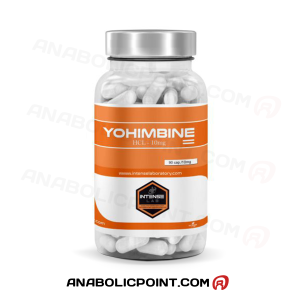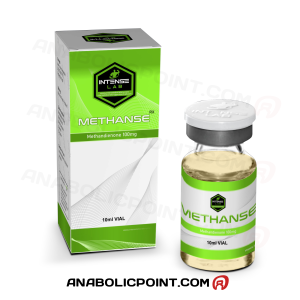Your basket is currently empty!
The Risks of Long-Term Steroid Cycles: Understanding the Consequences of Extended Use
Anabolic steroids have become a cornerstone for athletes, bodybuilders, and fitness enthusiasts seeking to enhance performance, build muscle, or improve aesthetics. However, the use of anabolic steroids comes with inherent risks, particularly when cycles are extended over long periods. Long-term steroid cycles, while potentially offering sustained results, significantly increase the likelihood of adverse physical, hormonal, and psychological consequences.
This article delves into the risks associated with prolonged steroid use, the physiological effects on the body, the psychological challenges, and the steps to minimize harm. Additionally, it addresses commonly asked questions to provide a comprehensive understanding of the topic and empower informed decision-making.
What Are Long-Term Steroid Cycles?
Long-term steroid cycles typically extend beyond the standard 8–12 weeks that are considered “typical” for most users. These extended cycles can last for several months or even years, often involving the use of multiple compounds (stacking) to maintain or amplify results. The goal of such prolonged use is usually to achieve continuous muscle growth, maintain peak physical condition, or compete at a high level.
While the immediate benefits of anabolic steroids are well-documented—enhanced muscle protein synthesis, improved recovery, and increased strength—these benefits come at a significant cost when use becomes prolonged.
How Long-Term Steroid Use Affects the Body
1. Hormonal Disruption
One of the most profound effects of long-term steroid cycles is the suppression of the hypothalamic-pituitary-gonadal (HPG) axis. Prolonged steroid use shuts down the body’s natural testosterone production, leading to dependence on external hormones. Over time, this suppression can become irreversible, causing chronic low testosterone levels (hypogonadism) even after discontinuing steroid use.
In addition, prolonged steroid use can lead to an imbalance in estrogen levels due to the aromatization of testosterone into estrogen. This imbalance often results in side effects such as gynecomastia (development of male breast tissue), water retention, and mood swings.
2. Cardiovascular Risks
Anabolic steroids have a well-documented impact on cardiovascular health, particularly when used over extended periods. Long-term use can lead to:
- Increased levels of LDL (bad cholesterol) and decreased levels of HDL (good cholesterol), raising the risk of atherosclerosis.
- Elevated blood pressure, which strains the heart and increases the risk of heart attack or stroke.
- Myocardial hypertrophy (enlargement of the heart), which can lead to impaired heart function.
3. Liver Toxicity
Oral steroids, in particular, are hepatotoxic and can damage the liver with prolonged use. Over time, this can lead to liver inflammation, scarring (fibrosis), or even liver failure. Monitoring liver enzymes during long-term steroid cycles is crucial, though this does not eliminate the risk entirely.
4. Kidney Damage
Steroid use increases the risk of kidney damage due to its impact on blood pressure, protein metabolism, and renal function. Compounds like Trenbolone are particularly nephrotoxic and exacerbate the risk when used long-term.
5. Psychological Effects
The psychological effects of long-term steroid use are often underestimated. Users may experience:
- Aggression and Irritability: Commonly referred to as “roid rage,” heightened aggression can strain relationships and lead to impulsive behavior.
- Dependence and Addiction: The psychological reliance on steroids to maintain physique or performance can lead to prolonged use, despite awareness of the risks.
- Depression: Discontinuing steroids after long-term use often leads to depression, caused by the hormonal crash and loss of perceived physical or performance benefits.
6. Immune System Suppression
Prolonged steroid use can weaken the immune system, making users more susceptible to infections and illnesses. This suppression can have long-term health implications, especially when combined with other factors like stress or poor recovery practices.
7. Reproductive Issues
Long-term use often results in testicular atrophy (shrinkage of the testicles), reduced sperm production, and infertility. In some cases, these effects persist even after stopping steroids, requiring medical intervention.
Other Long-Term Side Effects to Consider
- Skin Issues: Persistent acne, oily skin, and increased risk of scarring.
- Hair Loss: Accelerated male pattern baldness in individuals genetically predisposed to it.
- Bone Health: Prolonged use may weaken bone structure due to altered calcium metabolism.
- Sleep Disorders: Insomnia or disrupted sleep patterns, which impair recovery and overall health.
Reducing the Risks of Long-Term Steroid Cycles
Although the safest choice is to avoid long-term steroid use altogether, individuals who choose this path can take certain steps to mitigate harm. These include:
1. Health Monitoring
Frequent blood tests to monitor liver function, cholesterol levels, kidney health, and hormonal profiles are essential for early detection of adverse effects.
2. Responsible Dosage
Using the lowest effective dose and avoiding excessive stacking can reduce the strain on the body.
3. Regular Breaks
Implementing off-cycles or bridging protocols can give the body time to recover, although this does not eliminate risks entirely.
4. Supportive Medications
Using protective medications, such as aromatase inhibitors to manage estrogen or hCG to maintain testicular function, can help manage side effects.
5. Healthy Lifestyle Choices
Maintaining a balanced diet, engaging in cardiovascular exercise, and avoiding other harmful substances like alcohol can help reduce the overall health burden.
FAQs on Long-Term Steroid Use
- What defines a long-term steroid cycle?
A long-term steroid cycle typically exceeds the standard 8–12 weeks and involves continuous or repeated use over several months or years. - Can long-term steroid use cause permanent damage?
Yes, prolonged use can lead to irreversible conditions such as chronic low testosterone, infertility, and cardiovascular damage. - Is post-cycle therapy (PCT) effective after long-term use?
PCT can help restore hormonal balance, but recovery is often incomplete after extended use, especially if natural testosterone production is severely suppressed. - What are the signs of cardiovascular damage from steroids?
Symptoms include chest pain, shortness of breath, high blood pressure, and fatigue. Regular check-ups can detect early signs. - Can long-term use affect mental health permanently?
In some cases, prolonged use can lead to persistent psychological issues, including depression, anxiety, or dependence. - How can I minimize liver damage from steroids?
Avoid oral steroids when possible, use liver support supplements, and monitor liver enzymes through regular blood tests. - Can women use steroids long-term without risks?
Women face unique risks, including virilization (development of male characteristics) and reproductive issues. These risks are amplified with prolonged use. - Are there safer alternatives to long-term steroid cycles?
Non-steroidal performance enhancers, such as SARMs (Selective Androgen Receptor Modulators) or natural supplements, may offer benefits with fewer risks, though they are not entirely without side effects. - How long does it take to recover after long-term use?
Recovery depends on the duration and intensity of use but can take several months to years. In some cases, complete recovery is not possible. - What should I do if I experience side effects during a long-term cycle?
Consult a healthcare professional immediately. Adjustments to the cycle or supportive medications may be required to mitigate harm.
The Long Road Ahead: Weighing the Costs of Long-Term Use
Long-term steroid cycles may offer sustained physical gains, but these come at a steep cost to health and well-being. The risks associated with prolonged use are significant, ranging from hormonal imbalances to life-threatening cardiovascular complications. While strategies exist to mitigate harm, they do not eliminate the inherent dangers.
For those considering or currently engaged in long-term steroid use, it is crucial to weigh the potential benefits against the risks. Prioritizing health, staying informed, and seeking medical guidance can help navigate this complex journey while minimizing the long-term consequences.












